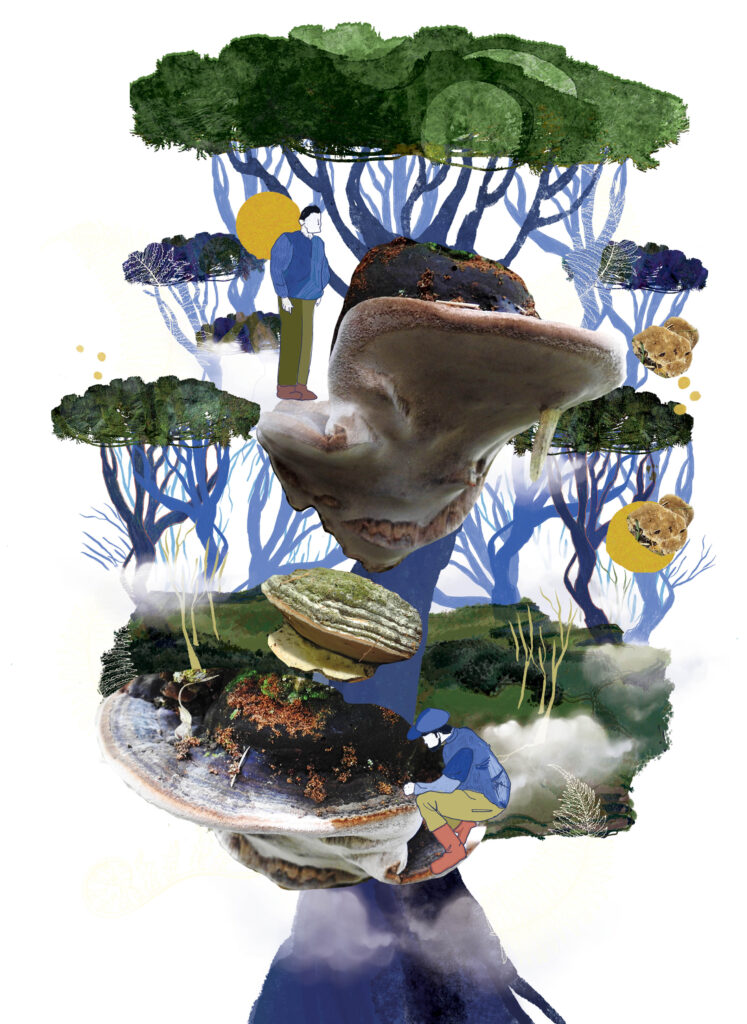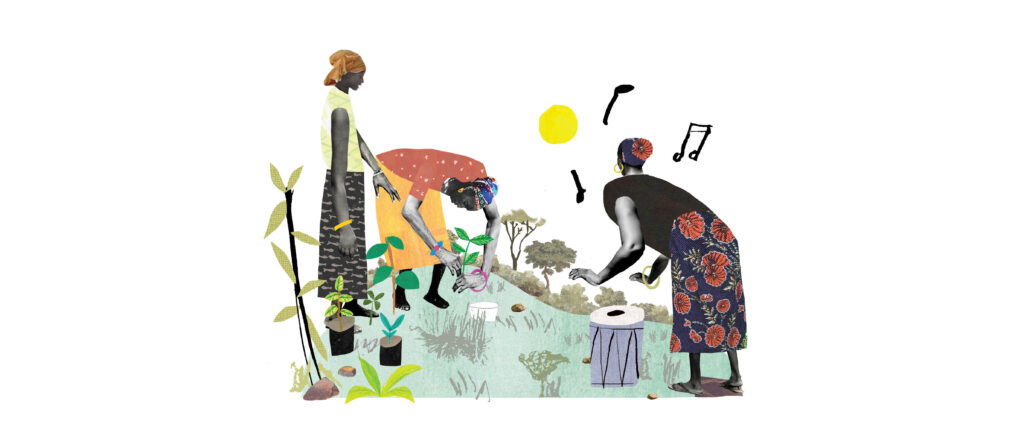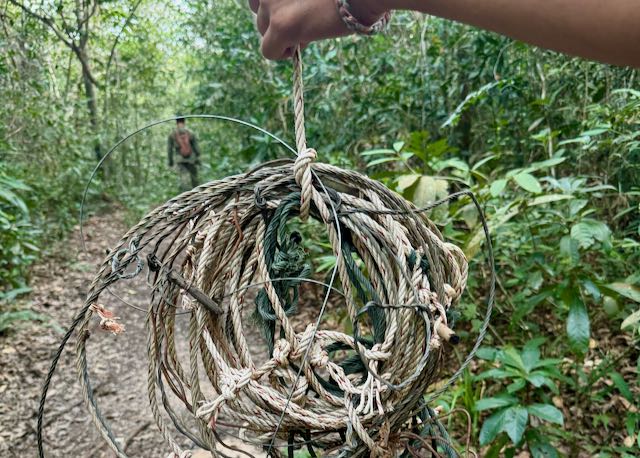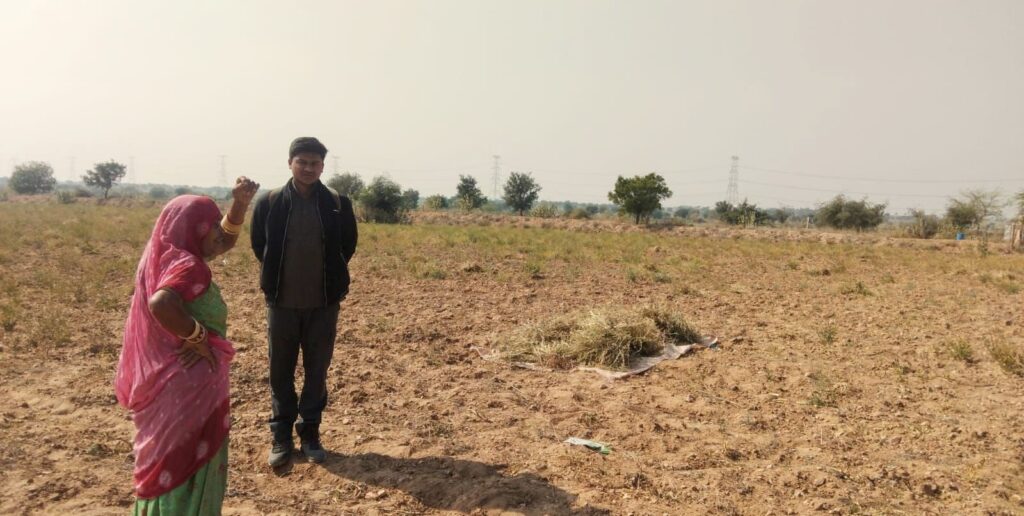When an endangered animal looks at you, it is only fair and just that you, as a human, become overwhelmed by temporary vertigo. But because the world is rarely fair nor just, this likely won’t happen. The trick of tourism, the spell of the conservation industry, is the manufacture of that feeling—powerful in its falseness—that you are watching real animals that aren’t really watching you. Uncomplicated and undisturbed, protected in your car, you are the leisurely sovereign. You may well be spotted by the animals being observed, but you feel safe knowing that you will not be truly seen by them.
I recently experienced this deception first-hand. In April 2023, I flew to South Africa to conduct archival research at Amazwi, the national English literary museum in Makhanda/Grahamstown. I am a literary scholar who focuses on how writers write about animals. I’m currently working on a new book project about literature and conservation. Titled The Conservation Plot, the book examines how postcolonial authors, from the decolonising 1960s to globalised 2010s, have used literature to tell stories about wildlife conservation, using different modes and styles to reveal the cracks in the “fortress conservation” model that has grown to dominate the practices and ideologies of wildlife protection.
National parks play a big role in this story. Beacons of benevolence, symbols of state power, the national park—whether Yosemite or the Peak District—stands as many things at once: a place in which nature can ostensibly be itself, yes, but also a new enclosure, a sacred haven for the steady flourishing of indigenous species and the extermination of so-called aliens, a venue for ecotourism and profit-seeking, and a policed and bordered site of uniformed suspicion and informal authoritarianism.
Most troubling for me is that national parks often present a version of nature without history, a deeply naturalised nature that’s suspended in a perpetual present and also, somehow, a window onto the deep past. The “wilderness” is a myth. There is no pristine, untouched nature. And national parks are the products of violent land grabs, of displacement and culling, of vast years’ long efforts to rearrange landscapes and move mountains. Yet the conjuring trick of the national park is that it hides the scars. Carefully managed, the national park manages to carefully erase the palimpsests of social history. It presents, packages and stages nature.
All of these thoughts were rattling around my head when, during my stay in Makhanda, I drove along the highways and dirt roads to visit Addo Elephant National Park, a vast conservation area in the Eastern Cape province. Just bigger than the size of Greater London, the park houses hundreds of elephants, as well as lions, buffaloes, rhino and leopards. It is surrounded, on all sides, by private game reserves—Shamwari, Schotia, Amakhala—that house their own populations of the so-called Big Five species.
Addo opened its gates in 1931, in the middle of a decade-long period in which the unified South African government devoted previously unprecedented resources to wildlife protection. Kruger, the gigantic park in the far north, opened five years before; Mountain Zebra, a smaller site, followed six years later. Addo is the product of what the historian of conservation William M. Adams calls the dawn of the “age of preservation”, that extended moment in colonial history when trophy hunters shapeshifted into wildlife advocates.
Throughout the 19th century, the settlers in the Eastern Cape substantially rearranged human–nature relations: expanding agriculture, cutting back forests, increasing wildlife hunting and trading. The destruction was so wide-ranging that, come the end of the imperial century, reports emerged that only two groups of elephants remained south of the Limpopo river: the Addo and the Tsitsikamma, with the former having just 11 or 16 members left—the exact number depending on which sources you read.
One way of telling the story of Addo, then, is to tell it simply: that the park is a tender-hearted safeguard for an embattled herd, and a towering success story at that. Sixteen elephants have become 600. This is the official narrative, the tourist board fiction.
But plotting Addo’s story like this glosses over a long and violent history of conflict between farmers, zoologists, bureaucrats and elephants. As Jules Skotnes-Brown has shown (see Further Reading section), during the two decades before the park’s opening, the Addo elephants were perceived as a pest. Constantly overstepping social boundaries, they roamed and trampled on settlers’ ever-expanding farmland. The farmers demanded their extermination, and the newly formed South African state obliged. A trusted hunter was hired, shooting towers erected, a timeline to extinction mapped out.
But after months of slaughter, with just 10 or so elephants left to kill, scientists and campaigners began arguing that the Addo herd was a unique “dying race” in need of special protections. The hunt was soon called off, and in the name of zoological race science and anxieties over species degeneration, the official tactics switched from state-sponsored extinction to species preservation.
None of this is legible to the visitor who, always looking out from behind their steering wheel, is permanently too close and too far away from the outside. Crawling along the narrow, bumpy trails in your car, studiously surveying the road to avoid crushing the scurrying flightless dung beetles below, you are beholden to a perspective ontologically inseparable from the automobile itself.
Sure, this is nothing like driving at speed, where the “hurrying eye” immediately forgets the “vanishing landscape” behind it, as Theodor Adorno once wrote about America’s “impressively smooth and broad” roads. But what’s shared here, what you constantly battle against as a visitor, is the obvious fiction Adorno grasped: that the land around you “bears no traces of the human hand … as if no one had passed their hands over the landscape’s hair”.
What you can easily miss out on in Addo is that this land has been shaped and reshaped by real people. What you struggle to see, despite the park’s promise of all-seeingness, is that the elephants’ home was never a fenced-in area surrounded by irrigated grids of land. It was an entire province in which they once moved freely, for better and for worse. You cannot see that the bushveld that you drive through testifies to the history of what Marx called primitive accumulation, the expropriation of land and enclosure of the commons through “blood and fire”. This land was once a Xhosa stronghold violently won by the British, who then slowly carved it up into profitable farms. Black tenants, then proletarianised into dependency, are now banished completely. Only workers and tourists remain.
And the elephants themselves are the children of a near-century of domestication, a process of active familiarisation to human visitors: their waterholes strategically dug and (I presume) occasionally refilled, their placid behaviour of undeniable economic interest to the continuation of tourism. Addo is clearly not a zoo. But in a way, it is
So I am writing this reflection in order to submit myself to the sheer, unbalancing force of nature’s vertigo, a vertigo that is not natural at all but historical. In Addo, what appears to be completely natural is remarkably constructed. This is not “bad”. It just is. And it is the conservation plot of the national park that obscures this in order to pre-package satisfaction.
Ultimately, I write to recover the feeling of being seen by the elephants that I saw on that day. Those 30 or 40 elephants, the descendants of eliminated ancestors — their gaze is no less real just because they live in a fiction. They did not, could not, know of my shame. But what I wanted to tell them in my glance was that I was determined not to exploit or reproduce my sovereignty. I would write critically. I wanted the elephants to know that they did not have to put on a show, that I would not mistake the manufactured for the authentic, that I would tread as lightly as I could.
But the national park produces visitors in its own image. You can try to be as respectful as you want, but there is nothing you can be on a game drive except a tourist trapped in a dusty rental car, click-clacking a camera. Self-will alone cannot emancipate you from what is structurally necessitated. There are uneasy resonances between my apologies here and those of the imperial hunter.
Surely it would take an entire change in the mode of production, the abolition of the conservation industry as we know it, to generate alternative, less extractive subjectivities. Until that day, I will write to restore history to nature and open myself to the other’s gaze. Before my trip to Addo, I had never been seen by an elephant before. Now I have.
Further Reading:
Skotnes-Brown, J. 2021. Domestication, degeneration, and the establishment of the Addo Elephant National Park in South Africa, 1910s–1930s. The historical journal 64(2): 357–383. doi:10.1017/s0018246x19000761






